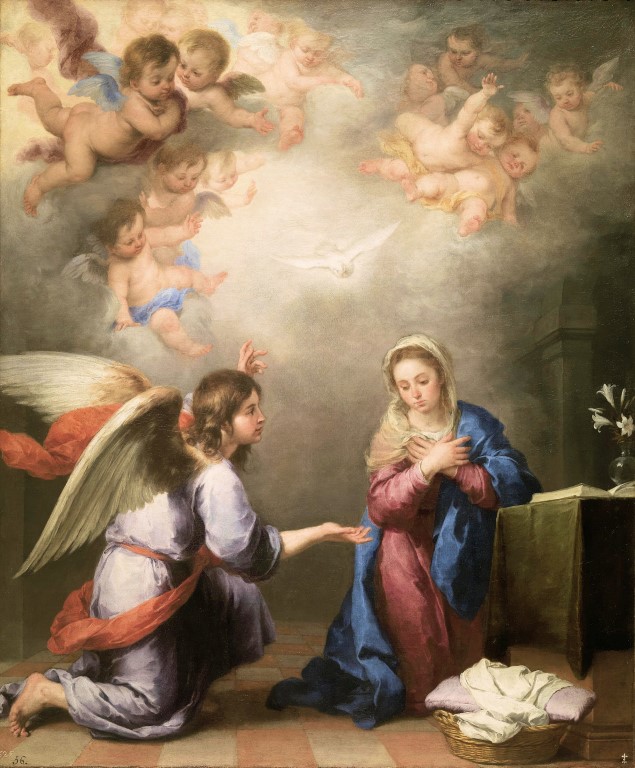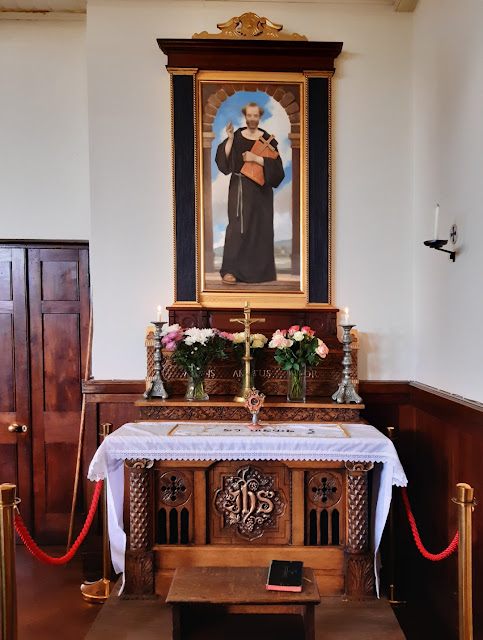St Nicolas du Chardonnet
It is Passiontide and the New Liturgical Movement has been posting pictures of Churches that have veiled their statues from the 5th Sunday of Lent or Passion Sunday, (depending on whether you are following the usus antiquior or recentior.) I was surprised that this was considered a rare practice but visiting Churches in Paris, I did not see any statues veiled. Except the one in the above photo which I visited the other day. It was a strange experience compared to visiting most Churches in France (or elsewhere in Europe.) The Church was being cleaned but there were people there praying. The notice board had plenty of the expected initiatives for catechesis, social work and devotional events.
Unusually, there was no forward-facing altar, so the original plan of the Church could be seen without distraction, leading the eye to the High Altar and the tabernacle.
There were plenty of side altars. Normally these are used as storage spaces or display rooms. In this Church all the altars had altar cloths and candles. Astonishingly, the confessionals were set up to be used, with a notice indicating the priest who would be there and when. There was also a duty priest available for fixed hours throughout the day.
The Church is St Nicolas du Chardonnet which was occupied by the Society of St Pius X in 1977. They simply processed in and took the place over. (Discuss.)
Yesterday evening I attended to the normal scheduled weekday Low Mass. (I didn't take photos in case there was some rule in force, but if anyone from the Society would like me to do so, I'll be happy to oblige on a future occasion.) In most respects, it was exactly as you would expect. The Mass was the same as I celebrate on Saturday morning with a few very minor variations. It seemed in a low-key way to be a "Dialogue Mass" in that some of the congregation joined in with the responses. The most significant adaptation to this was that the priest said "omnipotentem" rather loudly at the end of the Orate Fratres as a cue for people to make the response "Suscipiat". But in fact only some of the congregation did with any volume. People were left free to participate in the way that was suitable for them.
For those interested in such details, the Epistle was read in French by the priest, the Gospel was read in Latin and then repeated in French, there was the "second Confiteor" at the Holy Communion of the faithful and the Leonine Prayers were in Latin. However, these are details: my servers would have had no difficulty stepping in. The Mass was celebrated reverently with full, conscious and active participation of the faithful, whether they were saying things out loud or not. And yes, sorry to raise the point, but the average age was a long way short of 65.
My impression was of a healthy, active parish offering catechesis, spiritual and social outreach, three Masses on a weekday, generous provision for Confession, and a well cared-for Church which was unmistakeably a place of prayer. It reinforced my sincere hope that the discussions currently taking place with the Holy See can lead to a resolution of those issues which deprive us of full co-operation with this most effective apostolate.





